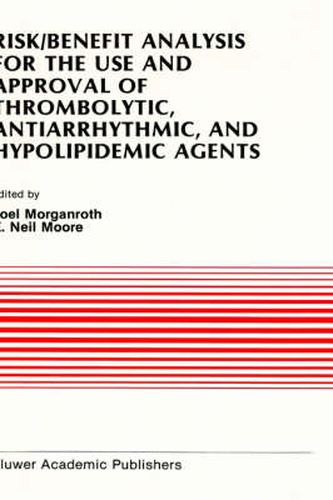Readings Newsletter
Become a Readings Member to make your shopping experience even easier.
Sign in or sign up for free!
You’re not far away from qualifying for FREE standard shipping within Australia
You’ve qualified for FREE standard shipping within Australia
The cart is loading…






This title is printed to order. This book may have been self-published. If so, we cannot guarantee the quality of the content. In the main most books will have gone through the editing process however some may not. We therefore suggest that you be aware of this before ordering this book. If in doubt check either the author or publisher’s details as we are unable to accept any returns unless they are faulty. Please contact us if you have any questions.
The Symposium on New Drugs provides a forum for academic investigators, research and development personnel from the pharmaceutical industry and members of the Food and Drug Administration to discuss important clinical research issues. The Ninth Annual symposium on New Drugs addressed the problem of determining the risk versus benefit for use of three important classes of cardiovascular agents: thrombolytic, antiarrhythmic, and hypolipidemic agents. The use of thrombolytic agents has become one of the major advances in clinical intensive cardiologic care in the 1980s. While the lysis of clot(s) obstructing a major coronary artery should reverse or prevent the damage of acute myocardial ischemia and infarction, one must carefully consider the potential risks of such agents in regards to their potential benefits. The time when a thrombolytic agent should be administered to maximize benefit as well as how one defines a dose response relationship using intravenous critical care medicines were discussed as important clinical trial issues. The benefit versus risk data on currently available thrombolytic agents was reviewed and the potential roles for adjunctive agents addressed. Overall strategies regarding post- x thrombolytic care and relationships to sudden cardiac death were also detailed. The panel discussion sections provided a comprehensive view of the current thinking of the various participating groups in this symposium. Sudden cardiac death remains the number one cause of mortality in western industrialized societies.
$9.00 standard shipping within Australia
FREE standard shipping within Australia for orders over $100.00
Express & International shipping calculated at checkout
This title is printed to order. This book may have been self-published. If so, we cannot guarantee the quality of the content. In the main most books will have gone through the editing process however some may not. We therefore suggest that you be aware of this before ordering this book. If in doubt check either the author or publisher’s details as we are unable to accept any returns unless they are faulty. Please contact us if you have any questions.
The Symposium on New Drugs provides a forum for academic investigators, research and development personnel from the pharmaceutical industry and members of the Food and Drug Administration to discuss important clinical research issues. The Ninth Annual symposium on New Drugs addressed the problem of determining the risk versus benefit for use of three important classes of cardiovascular agents: thrombolytic, antiarrhythmic, and hypolipidemic agents. The use of thrombolytic agents has become one of the major advances in clinical intensive cardiologic care in the 1980s. While the lysis of clot(s) obstructing a major coronary artery should reverse or prevent the damage of acute myocardial ischemia and infarction, one must carefully consider the potential risks of such agents in regards to their potential benefits. The time when a thrombolytic agent should be administered to maximize benefit as well as how one defines a dose response relationship using intravenous critical care medicines were discussed as important clinical trial issues. The benefit versus risk data on currently available thrombolytic agents was reviewed and the potential roles for adjunctive agents addressed. Overall strategies regarding post- x thrombolytic care and relationships to sudden cardiac death were also detailed. The panel discussion sections provided a comprehensive view of the current thinking of the various participating groups in this symposium. Sudden cardiac death remains the number one cause of mortality in western industrialized societies.